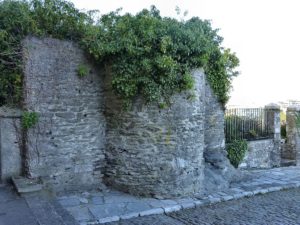I am excited to be part of Amy Licence’s book tour this week for her latest book, Catherine of Aragon – An Intimate Life of Henry VIII’s True Wife. In this excerpt from this exciting book, Catherine sees England for the first time. It is hard to imagine what was going through Catherine’s mind at this moment, but Licence does a great job of recreating the atmosphere of the era.
Excerpt

Catherine of Aragon by Amy Licence
England stretched before Catherine: damp, green and fertile, with gently undulating hills dotted with sheep and mines full of tin. Or at least, that was the way another foreign visitor found it, an anonymous Venetian who recorded his impressions of the country and its people in around the year 1500. He described a land very different in climate and appearance from that to which the Spanish Princess was accustomed, full of lush “beautiful valleys… agreeable woods and extensive meadows,” with less severe winters and milder summers than his native Italy. “This,” he explained, was “owing to the rain,” which had fallen almost every day through June, July and August during his visit, adding to the “great abundance of large rivers, springs and streams” and “every description of tree” including almost “all our fruit trees, with the exception of the olive and the orange.” As the Spanish fleet sailed into the channel, closing in upon the Devon coast, they could only have distinguished colours and outlines; a cliff-face and shingle beach, rolling fields, the odd spire and, perhaps, banks of cloud. Just eighty miles from the most south-westerly tip of the British Isles, lay the port and town of Plymouth, where Catherine was to get her first taste of England and the English.
A map of Plymouth in 1540 shows an extensive sea wall and defences, with a square tower marking the entrance of the bay, dotted with cannons. The Spanish fleet would have sailed into Sutton Pool, a safe haven protected by fortifications and an entrance which could be closed off by chain, and was the main resting place for ships before the construction of Plymouth docks. It is unlikely to have been so well defended in 1500. The first major landmark Catherine would have seen from the water was Plymouth Castle, built on a mound immediately to the west, to help defend against the frequent raids by the French during the Hundred Years’ War. It was unusual in being a municipal, civic building, run by the Mayor and Aldermen, with four imposing towers maintained by the four wards over which they had jurisdicton. Behind it, the town stretched away to the north and west, bounded by two parish churches. The map shows four ships at anchor, their bowsprits pointing towards the quay, but Catherine probably had to walk down a gangplank or disembark into a small vessel which conveyed her to dry land. A delegation met her on the quayside, headed by the Mayor and Aldermen, with the townspeople lined up and banners fluttering in the cobbled streets behind. As Alcares wrote to Isabella, her daughter “could not have been received with greater rejoicings if she had been the saviour of the world.” No doubt the colourful Spanish entourage, with their strange fashions, and their Muslim and African servants caused a stir.

Today all that remains of Plymouth Castle are a few bits of stone walls. Source: Smalljim
Catherine’s first request was to be taken to the parish church “as soon as she left the boat,” where she went in procession with her party, in order to give thanks for their safe arrival. The church was St Andrews, originally a Saxon building, with a new Lady Chapel and stone tower in the early perpendicular style completed as recently as 1490. Photographs of the old interior of the church before its destruction by a bombing raid in 1941, show a simple traditional nave with two aisles, fairly plain altar and main window, with simple beams above. When Catherine knelt there, to regain a little equilibrium after being tossed on the waves, it would have been far more colourful and ornate. Like Spain, England was a Catholic country, devout and particularly dedicated to the cult of the Virgin. While the rest of her surroundings may have felt unfamiliar, the rituals and trappings of her faith would have provided Catherine with a connection to home. The Italian visitor also remarked upon the devotion of the English, stating that they attended Mass daily, giving liberal alms, reciting verses and carrying rosaries, but he sounded a note of caution, that there were “many who have various opinions concerning religion.” This was to resonate later in Catherine’s life. Watching her, Alcares hoped that God would give her “the possession of all those realms for such a period as would be long enough to enable her to enjoy life, and to leave heirs to the throne.”
About the Author

Historian and Author Amy Licence
Amy Licence is a journalist, author, historian and teacher, currently living in Canterbury, Kent, UK. Her particular interest lies in the fifteenth and early sixteenth centuries, in gender relations, queenship and identity, rites of passage, pilgrimage, female orthodoxy and rebellion, superstition, magic, fertility and childbirth. Purchase a copy of the book at Amazon UK and pre-order it at Amazon US (due out in March 2017).